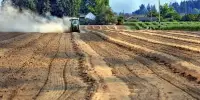Floodplain restoration refers to the process of restoring a floodplain to its natural condition, which includes its hydrologic and ecological functions. This involves removing or modifying man-made structures and infrastructure that disrupt the natural flow and storage of water, as well as planting vegetation and other practices that enhance the health of the ecosystem.
The goal of floodplain restoration is to reduce the risk of flooding, improve water quality, and enhance habitat for wildlife. It can also help to recharge groundwater, reduce erosion, and provide other ecosystem services. It can involve a range of activities, including removing or modifying levees and other flood control structures, restoring natural stream channels and meanders, re-establishing native vegetation, and creating new wetlands. These efforts can help reduce the risk of damage from floods by allowing floodwaters to spread out over a larger area and by reducing the velocity of the water.
Restoration process
Floodplain restoration projects can involve removing levees and dikes, re-establishing meandering streams, creating wetlands, and planting vegetation. They may also involve removing structures such as buildings and roads that interfere with the natural flow of water. This is typically done through the implementation of natural processes and the reintroduction of native plant and animal species to the area. The goal of floodplain restoration is to reduce the risk of flooding, improve water quality, and enhance biodiversity and wildlife habitats.
Floodplain restoration is the process of returning a river’s floodplain to its original condition prior to the construction of levees (dikes) and the draining of wetlands and marshes. The goals of restoring floodplains include reducing the frequency of floods, providing habitat for aquatic species, improving water quality, and increasing groundwater recharge. In addition to reducing flood risk, floodplain restoration can also provide a variety of ecological benefits, including improved water quality, increased biodiversity, and enhanced habitat for wildlife. It can also provide recreational opportunities and increase property values.
Benefits
There are a number of benefits to restoring floodplains, including reducing the risk of flooding, improving water quality, enhancing wildlife habitat, and providing opportunities for recreation and education. Restoration projects can also help to recharge groundwater, reduce erosion, and provide other ecosystem services. However, floodplain restoration can also be challenging, as it may involve removing infrastructure and structures that have been in place for many years. In addition, it may require significant funding and coordination among government agencies, non-profit organizations, and local communities.
The benefits of floodplain restoration are numerous. In addition to reducing the risk of flooding, a restored floodplain can also help to improve water quality by filtering pollutants and reducing the impacts of runoff. Restored floodplains also provide important habitat for a variety of wildlife species and help to maintain the biodiversity of the region.
















